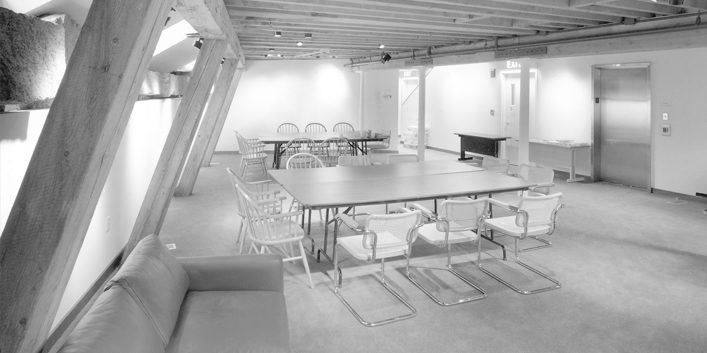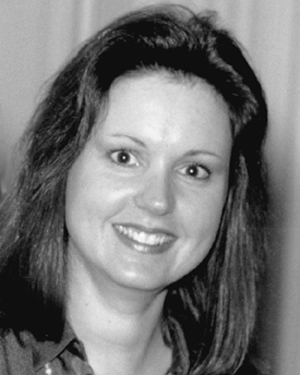A tale of the polar presidency

It was the worst of times.
I became president of the BSA at the annual meeting in November 1994. Just a week earlier, national elections had installed the first Republican-controlled Congress in 40 years, a reflection of widespread malaise, voter frustration, and fury with incumbents. My comments to the membership that night mentioned drive-by shootings, guns in schools, health insurance, and stressed-out people juggling multiple jobs and family responsibilities. We were five years into the recession of the late 1980s, which had not yet loosened its stranglehold on the local construction industry. The AIA reported a 48 percent decline in commercial and industrial activity nationally, but Boston was especially hard hit when the downturn slammed its banking and real-estate sectors. Robert Campbell FAIA, the architecture critic of The Boston Globe, estimated local architecture layoffs at 50 percent at the height of the recession.
Our members were discouraged. Conversations about survival strategies were peppered with gossip: the architect driving a cab, the one trying to launch a business making neckties, the sole proprietor taking early retirement in order to tap into Social Security. In an era when people still spent their entire working lives with one company, “alternative careers” was a new and exotic notion. Leaving architecture, or even finding new ways to deploy architectural skills, was considered something like leaving the priesthood: shocking but brave. To be honest? I remember feeling angry at this profession, which I loved so well—angry that a field that attracted so many good, talented people could cause them so much pain. How on earth was I supposed to rally the BSA troops?
I shouldn’t have worried.
The BSA then, as now, was a community. Executive director Richard Fitzgerald had already nurtured this spirit into a big-tent credo, which our members embraced with a near-feverish burst of activity in that difficult time. They reached out to support one another as best they could, but they also worked to build connections within the larger community.
In the following year, the BSA continued to demonstrate its commitment to public service and to develop its growing role as a civic resource. The Urban Design Committee, co-chaired by Norris Strawbridge and Pete Smith AIA Emeritus, continued its impressive record of public outreach with its Fort Point Channel charrette and a study of design issues related to the proposed Boston megaplex that would have replaced Fenway Park and Foxboro Stadium. The megaplex, which was later defeated and replaced by the Boston Convention and Exhibition Center, was also the focus of the Boston Forum—a new semiannual public event co-sponsored by the BSA and The Boston Globe, intended to promote broader public discussion of issues affecting the urban environment. Another Forum event featured the directors of leading cultural institutions discussing the role of the arts in economic development.
Under the leadership of Michael Hicks Hon. BSA, Ron Axelrod, and George Bachrach (the BSA’s first public director), the BSA began to engage more fully with the world of policy and politics—an educational process for both politicians and our members. State senator Warren Tolman was recognized as the BSA’s first Legislator of the Year. The BSA and the American Consulting Engineers Council (ACEC) jointly commissioned a study on the economic significance of the A/E industry that became the basis of conversations with the William Weld/Paul Cellucci administration.
We found other new ways to reach out to our industry peers: joint task groups with the Associated General Contractors and a nationally recognized initiative led by Tom Payette FAIA Emeritus addressing construction-phase services, which influenced the next generation of AIA contract documents. Past presidents Ed Tsoi FAIA Emeritus and Zibby Ericson FAIA established the BSA Corporate Advisors group, literally inviting industry colleagues to sit down at the table with us.
We also took care of ourselves. With more members exporting their services to foreign markets, we reconvened the International Committee, hosted a meeting of the AIA International Committee, and made plans for an exhibition and presentation by a BSA delegation at an international conference in Barcelona, Spain, the following year.
Taking care of ourselves sometimes involved some introspection. As vice president under BSA president Ed Tsoi, I had chaired the “Future Search” (aka the Vineyard Conference)—an event that started life as the annual AIA regional meeting, grew into a workshop led by Gary Graham FAIA with record attendance, and was later recognized as a significant examination of systemic changes in the profession that had been under way for many years. In 1995, Future Search discussions continued with five work groups producing white papers intended to reposition the profession for the challenges ahead. Their topics included responsiveness to clients, improving project delivery, harnessing technology, improving the quality of the work environment, and redirecting architectural education. That work became the basis of a new BSA strategic plan in the following year under 1996 president Lee Cott FAIA.

Taking care of ourselves also involved at least a few moments of angst, starting with a phone call from our panicked BSA comptroller at the start of a long July 4 weekend. He had just received word that the mortgage on our building at 52 Broad Street had been sold by our bank to a developer. The building was a source of great pride—our first permanent home, purchased through the vision and great generosity of several leading members. Like many property owners in the wake of the recession, we were underwater on the mortgage and so had reason to fear the implications of this news. Our connections paid off, and we were able to retain an experienced advisor to negotiate on our behalf, with a happy resolution the following year.
We tended to our own house, literally, with a minor construction project that leveled the fourth floor. No more phantom chairs rolling toward the west wall! We were at last able to update our ancient computer systems and—mirabile dictu—a computer finally appeared on Richard’s desk. An email fiend was born, thus ending the tradition of Sunday-night executive director–president fax communications.
But it was still largely a pre-web world. (The first browser, Mosaic, had been released two years earlier. Internet Explorer was launched in 1995 but was not yet in common use.) Many members were quick to embrace emerging technologies, notably Peter Kuttner FAIA and Geoff Langdon, who had built BSAOnline, an electronic bulletin board. But many were still new to the online world. With an eye to building BSA small-firm participation despite the perennial problem of our large geographic catchment, the President’s Fireside Chat was launched. It was a simple, dial-up text-based chat room, billed as the electronic version of a BSA living room. The metaphor was deliberate, with the idea of encouraging members to see the online world as a place. Conversations went something like this: “This is George. I’m new.” “George! Welcome! Sorry it doesn’t look like much, but there’s a beer in the fridge and you can pull up that comfy chair in the corner.” Discussions included job seeking, insurance, code issues, politics, and bad jokes—sometimes in combination (“16 percent of Perot voters believe if dolphins were really smart, they could get out of those nets”).
By the end of the year, the weight of the recession had begun to lift, leaving behind a profession that was transformed in many ways. We had lost The Architects Collaborative, closed down in April after debt defaults, while more nimble firms managed to adapt to the new realities. BSA membership levels recovered and began to grow. High levels of volunteerism had kept members involved and engaged, in many cases teaching them new skills and expanding their networks. Many firms developed new strategies that helped them to weather subsequent economic downturns. Boston architects recognized that strength lay in embracing an export economy, and the arrival of web-based technologies brought that goal within reach of even small firms and sole practitioners.
All BSA presidents recognize the great honor of serving such an extraordinary institution. I have always enjoyed the company of architects—their optimism, idealism, and collegiality, their expansive thinking. My ties to the organization, having attended meetings as a teenager with my father, Oscar Padjen AIA, sometimes make me feel like a lifelong BSA member. But it was my year as president that made me appreciate other qualities shared by BSA members and staff alike: resilience, respect, compassion and, especially, humor. It was the best of times.
Elizabeth S. Padjen FAIA, 1995 BSA president

